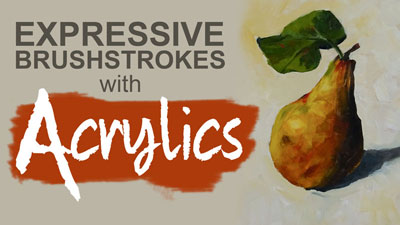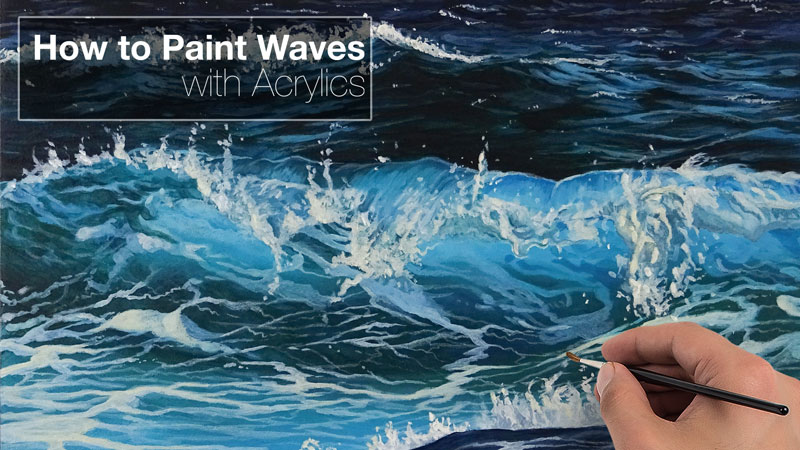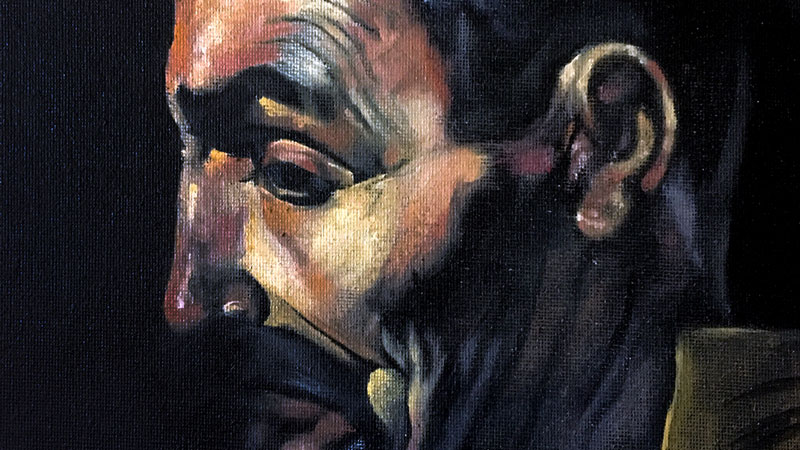
Impressionists also worked in the open air, in an attempt to capture fleeting moments of light. For this reason, they did not build up their paintings by layering but instead attempted to put the “right” color in the “right” spot with each stroke.
Take a look at the Impressionist painting below and note how the light canvas affects the resulting image…
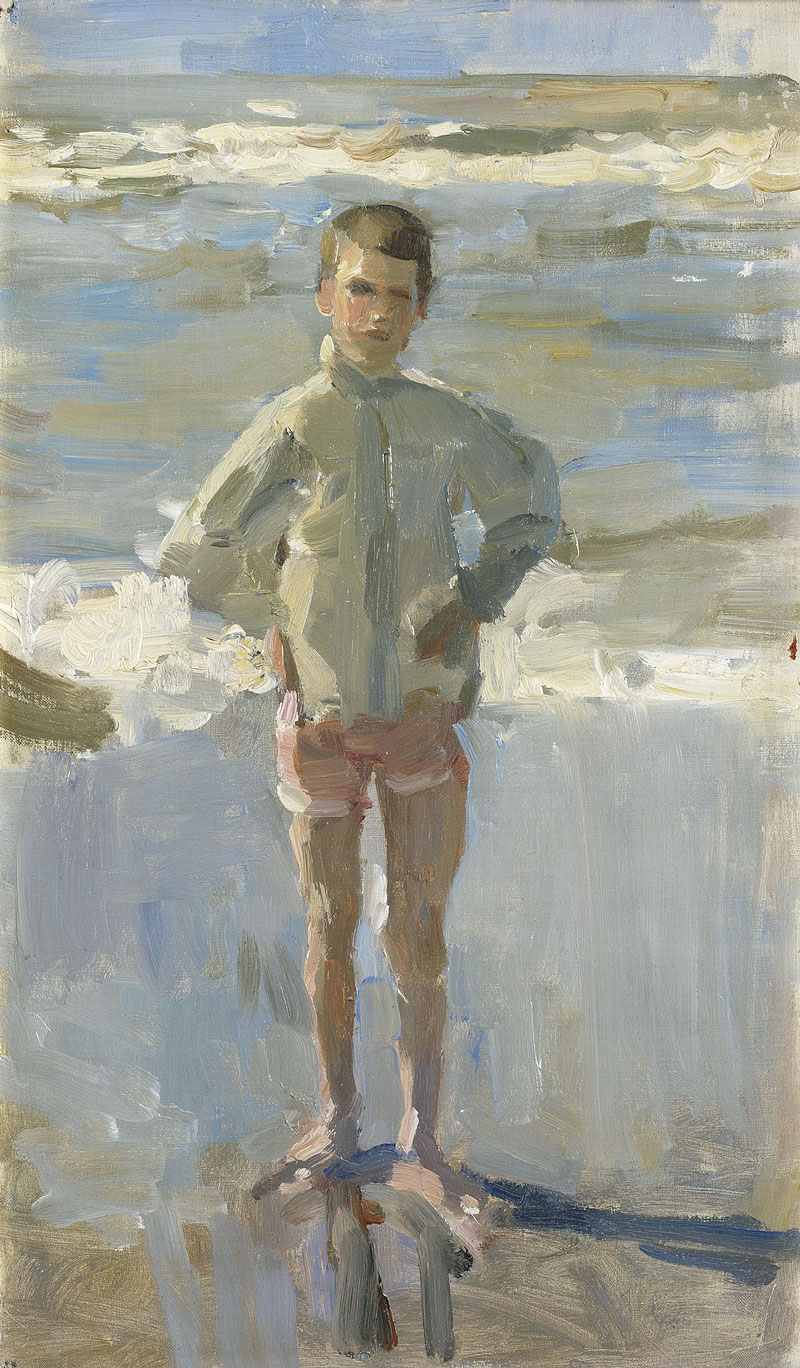
Image via Wikimedia Commons
Before the Impressionists, however, most artists approached painting in an entirely different way. They worked inside a studio and would often use color only after completing a fully rendered, monochromatic layer of paint called an underpainting. This approach to painting is often referred to as “indirect” painting.
See also: Indirect Painting with Acrylics
The Impressionists, of course, had no time to execute an underpainting as they were racing against the changing light of the ever-moving sun.
However, there was a wonderful period in the history of painting when artists neither worked over an underpainting nor on white canvases – the Baroque Period.
Paintings of the Baroque Period
During the Baroque period, most artists used canvases or panels that were toned dark brown and even black. There are some great advantages to working over a dark base layer which cannot be replicated by working on a light ground.
The greatest benefit to working on a dark canvas is that it saves effort. All of the shadows are already there. The artist simply needs to focus on the light values. This approach to painting is very similar to working on a black drawing surface with a white drawing medium.
See also: Drawing with White Media on Black Paper
The shadows are either ignored or completed using a technique called scumbling. Scumbling is a painting technique in which a thin, translucent application of paint is vigorously scrubbed into the canvas, while allowing part of the layer underneath to show through.
A finished Baroque painting feels sculptural because the light areas stand out in relief compared to the extremely thin application of paint in the shadows.
Since the shades are created through an optical mixture of translucent color over the dark, dull surface, the shadows are never that colorful. If you prefer brighter, high-key paintings then this characteristic of Baroque painting would be a drawback. However, because the shadows are so dull, the lights seem brighter by contrast.
Before walking through the process of Baroque painting, it’s worth looking at a few notable examples executed by some of the best known painters of all time.
Rembrandt
Look at the image below. Titled, The Philosopher in Meditation, this is a lesser known work by Rembrandt – but an excellent example of how Baroque painters let the dark canvas work in their favor.
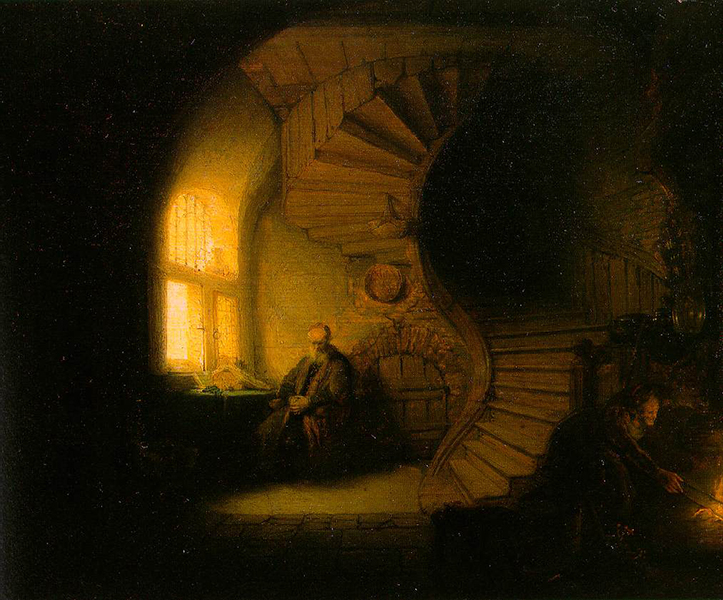
Consider the staircase. As the stairs disappear into the darkness, so does Rembrandt’s paint application.
He simply scrubbed-in lesser amounts of the same brown color from the bottom of the stair into middle, allowing the under layer of black to darken the value of each stair. Many of the small shadows between adjacent planks are just the black under layer peeking through. As Rembrandt worked toward the lightest values, he applied his paint more thickly.
Peter Paul Rubens
Peter Paul Rubens is best known for his large swirling compositions, featuring numerous people and wild beasts. However, in the painting of St. Peter (below), we can appreciate how he used the dark canvas to create the strong shadow on St. Peter’s head and clothing.
There is a complete gap between the hair in the shadow and the face. Well placed strokes of hair float in space, letting the viewer’s own imagination fill in the gap.
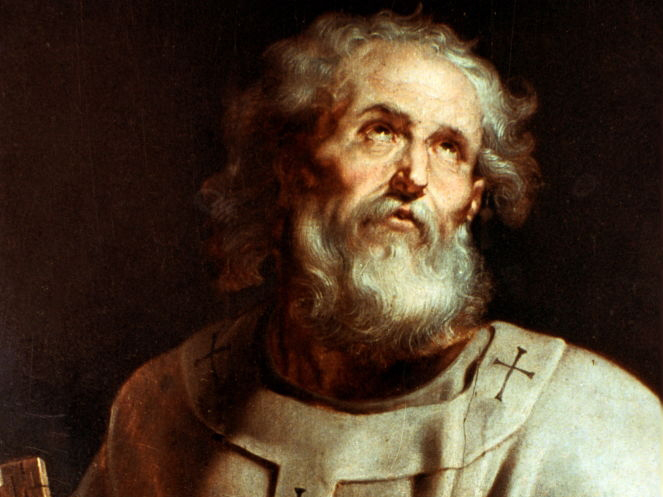
Diego Velazquez
Perhaps the greatest Baroque painter of all (in my opinion) was Diego Velazquez. He was a prolific court painter, serving Phillip IV, King of Spain and Portugal.
The following painting shows how effective Velazquez was at using the dark canvas in a number of ways. In this painting entitled La Aguador de Seville or The Water Carrier of Seville, Velazquez used the dark canvas to masterfully capture a clear glass, three people in varying intensities of light and clay vessels.
Look at the glass held by the old man and the boy. Beautifully painted, Velazquez used very little paint indeed.
An extremely small amount of white was scumbled from the edges of the glass toward the center of the glass. Disconnected dots at the bottom and strong highlights around the rim, give us a sense of detail with minimal work on the part of the artist. Velazquez’s economy of strokes is a testament to his mastery of painting – all that is needed and nothing more.
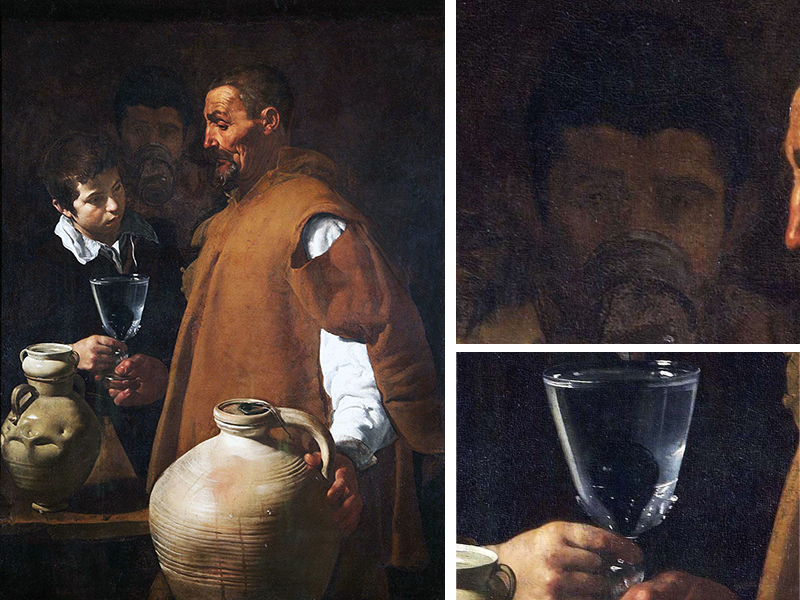
Now, look at the man in the center – the one drinking water behind the other two figures. His head was painted with only one color. The paint is thinnest where the values are darkest.
His hair isn’t painted at all but is suggested by the scumbling done in the background around his head – simple but effective.
It is the man on the right, the water carrier, that is the subject of the example painting that follows below. His fleshy, time-worn face is a great example of how painting on a black canvas can save time and energy.
In fact, the copy of this head, shown below in stages, is the result of only one painting session. With that, let us walk through the stages by which a head such as this is painted.
Stages of Baroque Painting – An Example
Follow along or apply the follow concept to a subject that is more personal to you.
Step One – Sketch the Subject on a Black or Darkly Toned Surface
With a pencil or faint marks of paint, minimally draw a few hard edges of the subject. Since the example is a copy, I simply used the graphite transfer method to transfer some lines onto a canvas prepared with black acrylic paint.
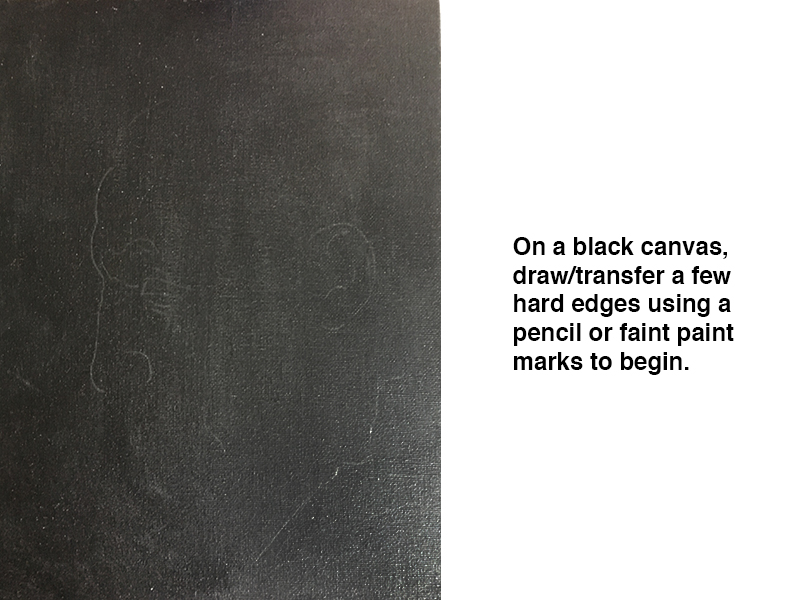
Step Two – Layer Lighter Values
Using oil paint now, mix a few light values using colors that are classified as opaque or semi-opaque.
All oil paint pigments are classified as opaque, semi-opaque or transparent. The transparent pigments are ideal for glazing (a technique not described in this article) but should be avoided when scumbling. Be sure to use titanium white when mixing the colors.
Titanium white was not available to the Baroque painters but is the most opaque pigment of all and is the best choice available to artists today. (Remember to mix the white with a color – pure white will look unnatural.)
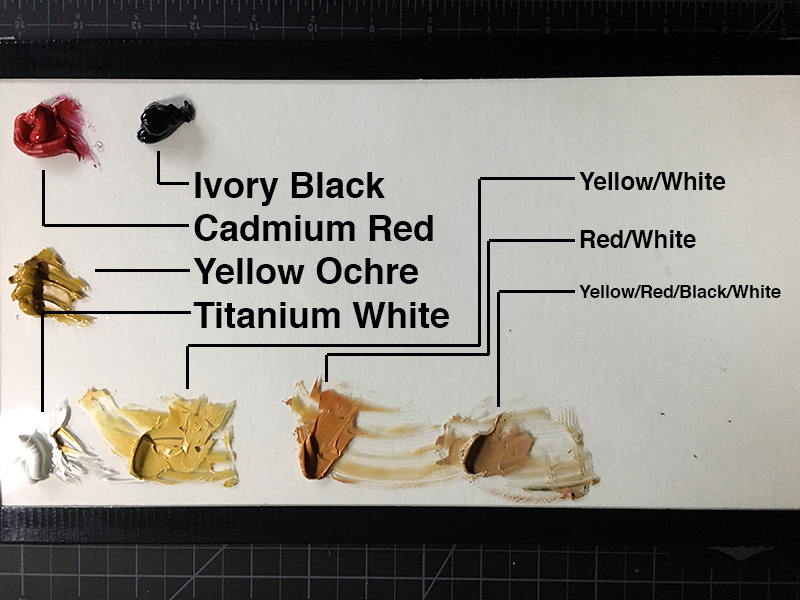
Step Three – Separate the Lights and the Darks
Using just one or two colors, separate the lights from the darks by first scumbling (scrubbing) the light values with an extremely small amount of paint on the brush.
One might begin by loading a stiff bristle brush with paint and then wiping it out with a rag or paper towel before applying what is left in the brush to the canvas. If the paint completely covers the under layer of black, then too much paint has been applied.

Use a Pink Pearl eraser (yes, you can erase thin applications of oil paint) to carve out the wrinkles in the flesh and accurately shape the shadows around the eye.
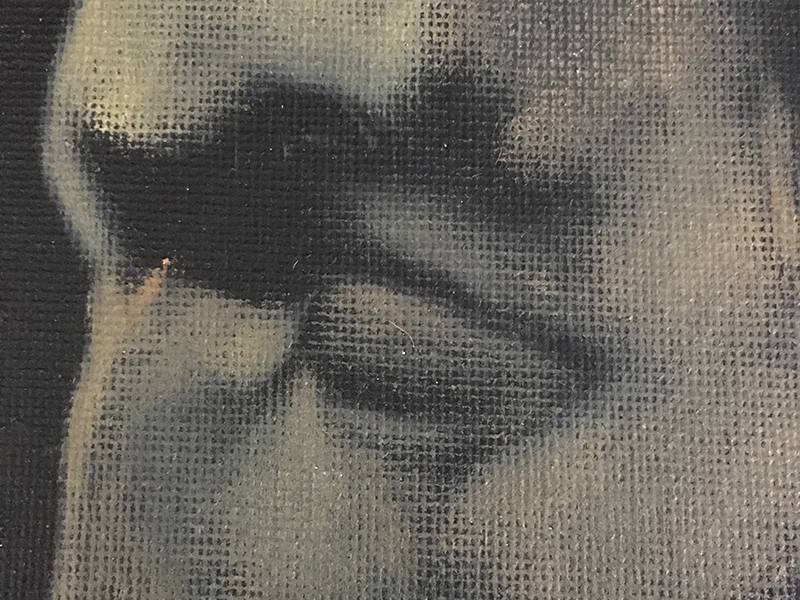
Step Four – Add Complexity to the Flesh
Mix a few more values of the fleshy color and begin painting directly and opaquely in the areas hit by the light only. Be careful with the transitions from tints to shades. If necessary, use a rag to wipe down the paint in these areas, making a transition, not just from light to dark but from thicker to thinner.
See also: How to Paint a Portrait with Oils
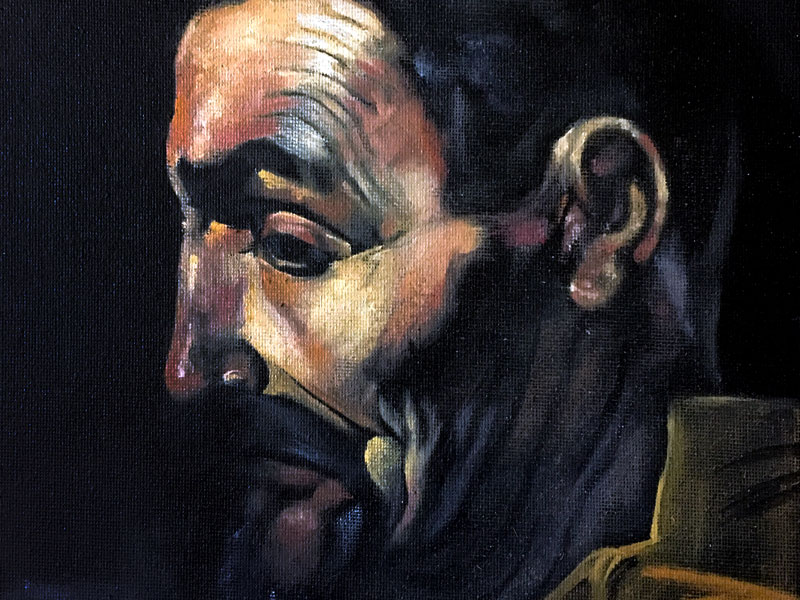
Step Five – Apply Darker Values if Necessary
Though not used in this example, feel free to apply dark marks of color as well. Looking closely at the coil-built vessel in the bottom of Velazquez’s The Water Carrier of Seville, one will notice that some of the shadows between coils are made by allowing the background to peek through while other dark accents are painted over the color of the vessel.
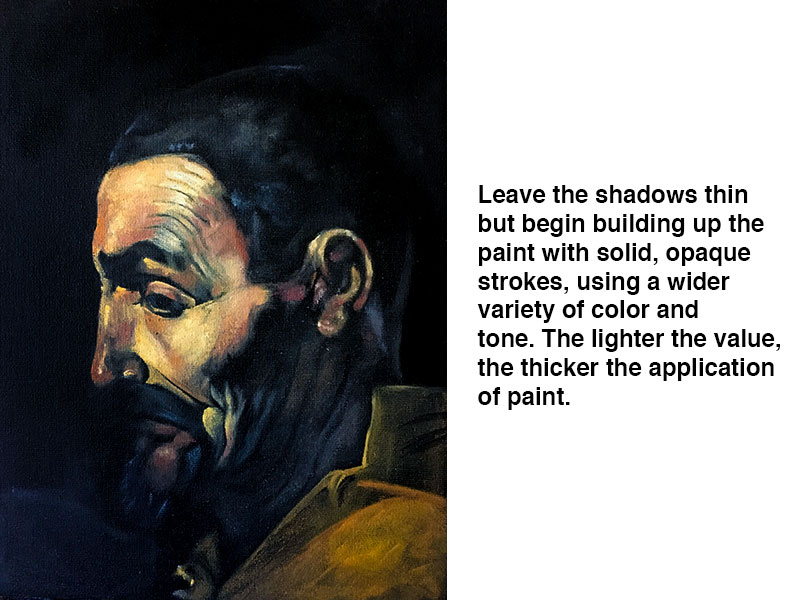
Conclusion
In your own journey through painting, you might choose to work on black canvases like the Baroque painters or simply borrow from them when it is most suitable. We can always learn from the masters that have come before us and apply their perfected techniques to our paintings.
If so, join over 36,000 others that receive our newsletter with new drawing and painting lessons. Plus, check out three of our course videos and ebooks for free.


